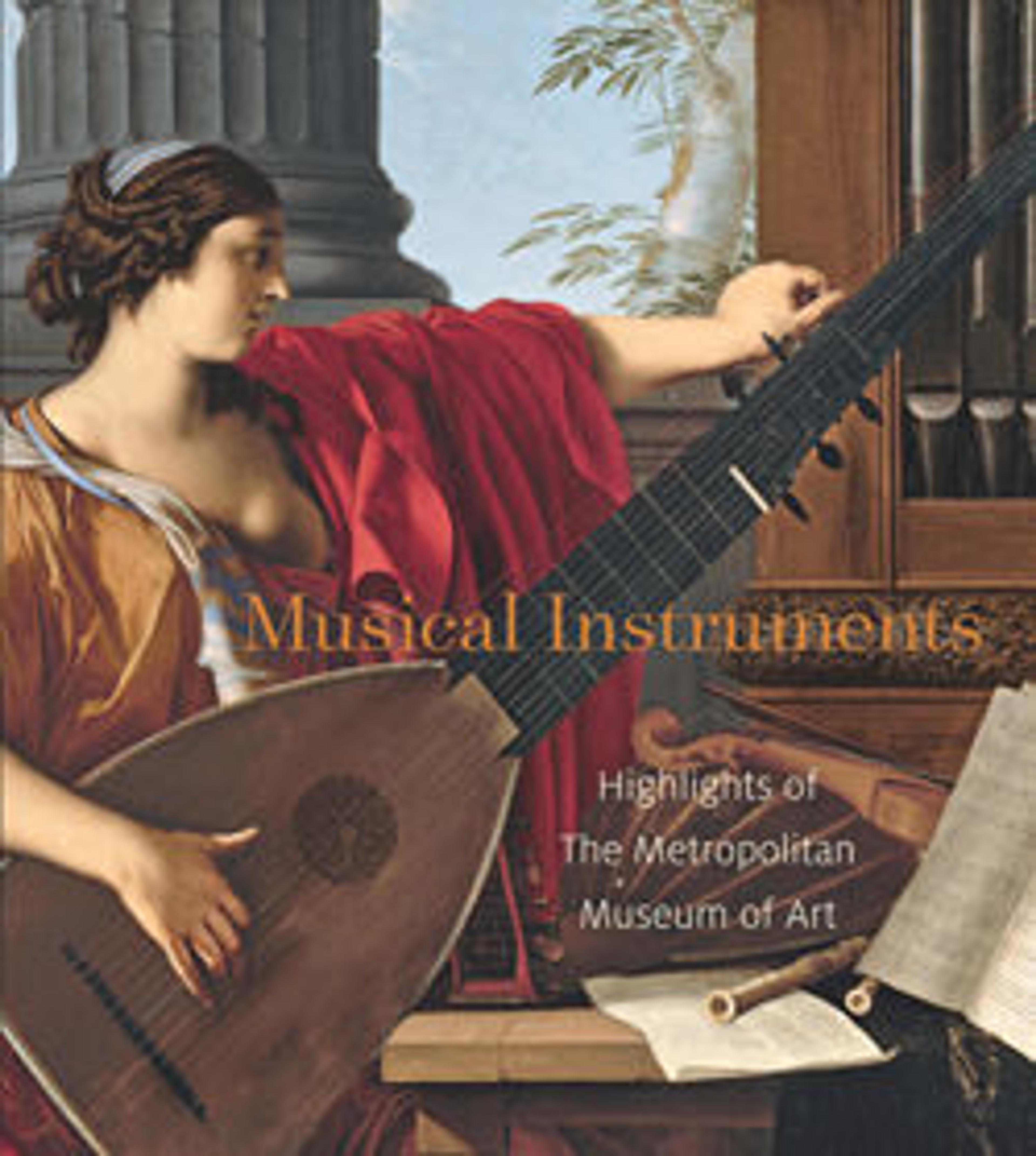Archlute
Sometime after the invention of the chitarrone ("large kithara") in Florence around 1585, various local forms of long-necked lutes were developed. One variant appearing in Rome at the end of the sixteenth century, dubbed the Roman arch lute, accommodated unfretted diatonic bass strings and was tuned to a pitch standard of about 386 hertz (a full step below the modern pitch standard), and was used in many churches. Only ten such instruments are known today, of which this example is the latest and one of the most beautiful. By the end of the through bass period, in the middle of the eighteenth century, the arch lute had become an indispensable instrument of the orchestra.
This example was built by the most prominent Roman luthier of the early eighteenth century, David Tecchler, who was born in Germany and moved from Augsburg to Rome in 1698 where he lived until his death. Renowned for his violins, and especially, his ‘cellos, Tecchler also occasionally made plucked instruments; however, this handsome instrument, signed Dav: Tecchler/fecit Roma AD 1725 on an ivory plaque on the final and similarly labeled within the body, seems to be his only extant archlute. Its bowl is comprised of fourtheen thin ebony staves separated by ivory double striping. The neck is veneered front and back with tortoiseshell over a thin layer of gold leaf. Six pairs of strings extend above the gut-fretted fingerboard, while eight single bass strings are fastened into a second extended pegbox. The fragile soundboard—currently in remarkably fine condition—is ornamented with an intricately carved rosette in the soundhole, mother-of-pearl inlays, and outlined with a bone and tortoiseshell lace. A clip on the back of the neck and a button at the tail secured a strap that supported this nearly six-foot-long instrument.
(Jonathan Santa Maria Bouquet, 2009)
This example was built by the most prominent Roman luthier of the early eighteenth century, David Tecchler, who was born in Germany and moved from Augsburg to Rome in 1698 where he lived until his death. Renowned for his violins, and especially, his ‘cellos, Tecchler also occasionally made plucked instruments; however, this handsome instrument, signed Dav: Tecchler/fecit Roma AD 1725 on an ivory plaque on the final and similarly labeled within the body, seems to be his only extant archlute. Its bowl is comprised of fourtheen thin ebony staves separated by ivory double striping. The neck is veneered front and back with tortoiseshell over a thin layer of gold leaf. Six pairs of strings extend above the gut-fretted fingerboard, while eight single bass strings are fastened into a second extended pegbox. The fragile soundboard—currently in remarkably fine condition—is ornamented with an intricately carved rosette in the soundhole, mother-of-pearl inlays, and outlined with a bone and tortoiseshell lace. A clip on the back of the neck and a button at the tail secured a strap that supported this nearly six-foot-long instrument.
(Jonathan Santa Maria Bouquet, 2009)
Artwork Details
- Title:Archlute
- Maker:David Tecchler (Austrian, Salzburg 1666–1747 Rome)
- Date:ca. 1725
- Geography:Rome, Italy
- Culture:Italian
- Medium:Spruce, ebony, ivory, tortoiseshell, mother-of-pearl
- Dimensions:Height: 70 3/4 in. (179.7 cm)
- Classification:Chordophone-Lute-plucked
- Credit Line:Purchase, Clara Mertens Bequest, in memory of André Mertens, 1988
- Object Number:1988.87
- Curatorial Department: Musical Instruments
Audio
9462. Archlute
0:00
0:00
We're sorry, the transcript for this audio track is not available at this time. Please email info@metmuseum.org to request a transcript for this track.
More Artwork
Research Resources
The Met provides unparalleled resources for research and welcomes an international community of students and scholars. The Met's Open Access API is where creators and researchers can connect to the The Met collection. Open Access data and public domain images are available for unrestricted commercial and noncommercial use without permission or fee.
To request images under copyright and other restrictions, please use this Image Request form.
Feedback
We continue to research and examine historical and cultural context for objects in The Met collection. If you have comments or questions about this object record, please contact us using the form below. The Museum looks forward to receiving your comments.
